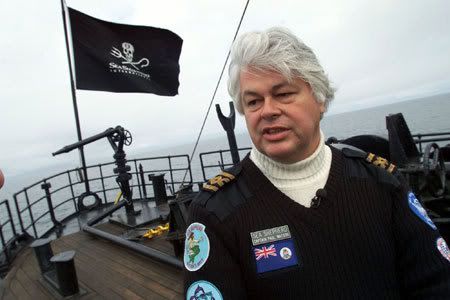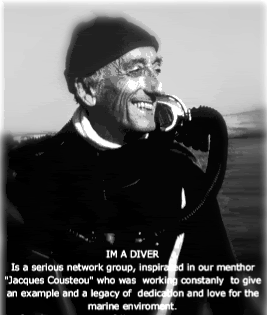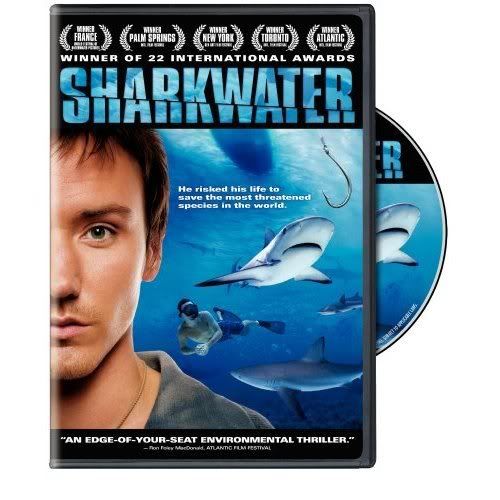
The Sea Shepherd Conservation Society dismiss Greenpeace as 'Avon ladies'. Their leader, Paul Watson, has rammed and sunk whaling ships, and this week has been continuing a deadly game of cat and mouse with the Japanese whaling fleet in the Southern Ocean. In 2005 journalist Peter Heller was with him when he pursued the same ships.
It was three o'clock when I awoke on Christmas morning. What woke me was the sudden drop of the bow as it gashed into the trough and the impact of my right shoulder hitting the locker at the head of my bunk. The Farley Mowat shivered. Then the wave pitched the stern out of water and the prop howled, beating air.
The sea was a frenzy. No night's respite, no night at all, just the unabated gloom of a perpetual dawn. The waves were now more than 10 metres, and the wind tore off their tops and streamed their backs with ropy lines of foam. Snow blew by in the tortured fog and mixed with the plumes of exploding spray.
The Farley took the monsters under her stern, and the exposed prop shuddered for a moment like a thing in pain before the wave threw the bow wildly to the sky. It was now a full force 8 gale.
Paul Watson sat up in the high captain's chair in his Mustang suit and Sorrel boots, looking from his radar screen to the sea. He was focused and calm.
I stared at the throbbing green blips on the main radar screen. Was it possible? Had Watson found, in hundreds of thousands of square kilometres of Southern Ocean, his prey? I looked at Watson in his exposure suit and began to pull on my dry suit. Watson turned to Cornelissen. "Wake all hands," he said.
We were 354 kilometres north-north-east of Antarctica's Commonwealth Bay. The Farley laboured up the back of an 11-metre wave and plunged down the other side.
An intense quietness had come over the bridge. After many months of preparation and planning, Watson was sneaking up on two vessels in a vast empty sea in a near hurricane and the radio was silent. No one spoke. Allison came onto the bridge, as did Aultman and Ron with his camera.
At 3.50am, through the fog and spray, I saw a shadow that was not mist or wave. It was a ship. "There it is!" Hammarstedt cried. "That's definitely it!"
A terrible suggestion of a ship. We strained as if our eyes could concentrate and clarify the image. Then the fog did it for us, rending like ripped gauze, and there for a second was the giant stern, the slipway, the white block letters that read Nisshin Maru, Tokyo.
Trevor, with his engineer's telepathy, down in the engine room, must have known. The Farley Mowat was taking the waves at what for her was a dead run.
"We're doing 11 knots. They're doing six," Alex said.
"I have tweaked the engine." Trevor was in the doorway, ear protectors propped on his head, an elusive smile just slipping away.
Allison said: "The captain says we're severely limited with what we can do in this weather. Don't want anybody out there - hell!" She pointed out the forward windows. "Look at Gedden out there!"
Gedden was crouching, moving forward on the forecastle like a man in battle under fire. He had something black clutched against his right side, and when the bow plunged he grabbed the water cannon, or the anchor chain. He scrambled forward now on hands and knees. An explosion of spray covered him and he moved forward again. The next one knocked him over.
When he got to the bow rail, he whipped a karabiner from his harness and clipped it to the rail. Tethered in, holding the thing against him with his elbow, he went for the flag mast at the bow. He was going to hoist the Jolly Roger. In 60-knot gusts he got the flag clipped on somehow, hoisted it and cleated it off.
This was a psychological war as much as anything. The Japanese had said in their press when they left on November 7 from Shimonoseki harbour that they were afraid of an attack by Sea Shepherd. Fear would make them run. When they ran, they did not kill whales.
I didn't think fog happened in near-hurricane winds, but there it was, shrouding the Nisshin Maru after the first glimpse. The ship might have seen us, but probably it hadn't. It was maintaining its speed, just under seven knots. It was a sitting duck. It thought we were the Arctic Sunrise. Nobody bothered to step out on its bridge wing to look back and check.
I could only imagine what we would look like, appearing out of the fog, black and battered, the gale-stiffened Jolly Roger flying, with an avowed mission to cripple or destroy.
Alex kept one eye on the radar now and one eye on the sea ahead. He had the ship targeted on the screen, in a small white box, which gave him a continual readout of its speed, direction, range and time to contact.
"Seventeen minutes," he said. "Twelve knots."
The fog ripped away and just ahead was the slipway ramp cut into the stern where they winched up the dead whales, and the tall white superstructure of the cranes. A banner over the slipway read, "Greenpeace Misleads You". Fighting fire with fire.
Running down the length of the hull, visible when it corkscrewed on a swell, was the large block lettered word "research". As the ship rode over the bigger waves, its prop came out of the water. We were two kilometres away.
"I think the best tactic here, Alex, is the prop foulers. Bring it as close to the bow as possible. Low profile as possible. We don't want them to see what we're doing," Watson said.
Alex was leaning forward into the window in front of him like a cat; his eyes didn't move off the stern. "Do we want to ram them? Punch a few holes in their ship?"
I thought it was a rhetorical question.
"No, we'd sustain a lot of damage. Prop fouler's the best thing right now," Watson said.
He seemed to be protecting his crew. No sane person wanted a collision in these seas. Watson turned to Trevor. "Tell them to get the prop foulers ready on the stern. Tell them to stay down, stay hidden. Don't deploy them until I blow the horn."
Trevor nodded, exited. Allison tugged at Watson's elbow. "Do you want to get the helmets and vests? This is where they're going to shoot."
Helmets and body armour. Must be some of the items behind the locked door labelled "Powder Room".
"Sink right to the bottom with that stuff," Alex said. "I'll take a few bullets."
"Yes, but the bridge is where they're going to shoot."
"They're not going to shoot us."
"I can't believe they're going so slow," Watson said. We were coming right up on their stern, a kilometre now and closing. "How far is the Esperanza behind us?" The proximity of a potential rescue ship in these seas might determine Watson's level of aggression, although I didn't think a rescue boat could even spot swimmers in the violent waves.
The Nisshin was very close, but not close enough. It was like sneaking up on a browsing deer, holding your breath, praying a twig wouldn't snap. Maybe somebody on the Nisshin finally saw us. The pace with which we closed the gap slowed a little.
"The factory ship is increasing speed to eight knots now!" Alex said.
It was 4.48am. Alex began ticking off the Nisshin's speed. "Increasing speed again, nine knots now. Nine point four. One knot more."
Watson watched his prey. He sat up in the captain's chair, one hand, out of habit, on the knob of the lever that controlled our speed. He worked his jaw to the side. Not excited, not angry, just focused. He looked like a polar bear, with the same pitiless detachment, weighing distances, speed, odds. It was easy to see that this was not his first action.
He said: "Tell Trevor to deploy at the last moment. We don't want them to see us put it out."
"Nine point five," Alex said.
Watson didn't take his eyes off the ship, "I don't think they can go much faster in this weather. That's where we have the advantage. Some horses are good in mud and some aren't. This is a North Atlantic trawler - that's where our advantage is."
"Our speed is 11," Alex said. "Their speed is 9½."
We were off to its starboard, coming up on its stern. It was monstrous. Even so, the bigger waves were throwing its prop out of water. Some of them were over 12 metres. Trevor shoved open the bridge wing door and entered. He had on his Mustang suit now, and he was wet.
"The horn is on. They have the trail line ready."
The trail line was a two-centimetre thick longline on a spool on the stern. There was a kilometre of the stuff. Watson would try to push across the Nisshin's bow while Trevor and his team unleashed the floating line. The bigger ship would have no choice but to plow over it. The line would work its way down the hull and, Watson hoped, get sucked up in the Nisshin's prop.
But I didn't see how that would not be dangerous to the Japanese crew in this kind of storm. If the prop did jam, the Nisshin would have no headway and would broach sideways to the seas and wallow. They'd have to launch life boats in seas like this, in water that was at or below freezing.
Watson said again: "As soon as I hit the horn, then deploy it. We have to get far enough ahead so we don't hit them, but close enough so we're effective."
"Nine point six."
"Keep pulling alongside."
"I'll let you be the judge how close to get."
"We'll lose some speed as we cross."
"I hope we can disable those bastards. They're not going to let us have a second chance. Where are the passports?" Watson said.
"In the safe," Kalifi responded.
"The bag with the passports is not in there. Get someone to find them."
Kalifi went out. Watson was making preparations to abandon ship if necessary.
Alex, his voice rising, called out, "We're getting pretty close here. Point four miles."
"I'll hit the horn when I want Trevor to deploy."
"I found the passports."
"Just put it by the safe so it's ready to go."
"Greenpeace is speeding up too," Alex said. They had to be glued to their radar, watching the signal blips of the two ships starting to overlap.
"We could ram her up the slipstream if you want," Alex said. "What do you say, Paul?"
"Yes, the swells are good," piped up Hammarstedt, who was again at the main radar; it was the first thing he'd said in a while. He meant that we had waves following us of great size, so it would be easy to come down off the top of one and crack down with force into the opening of their slipway.
"No, we're going to do this," Watson said.
Watson had the benefit of three decades of similar actions. He was evidently making his bearlike calculations.
"Is he picking up speed at all?" he asked.
"Nine point nine knots."
"He can't go any faster. He's going to cut the swell as soon as we go by him, too." Meaning Watson thought he would turn.
"Toward us?" Alex asked.
"Yes. Don't underestimate the guy gunning it as we come across." Watson was thinking they might try to ram us. "I think just past the 'research' thing is the best time. How far in front of the research sign do you want to start cutting in? You feel safe enough?"
"We've got a knot," Alex said.
The Farley, to everyone's astonishment, overtook the Nisshin's stern and began to move up alongside. It was about 91 metres to port. Black hull, white superstructure, freshly painted, four-storeys high, with three massive crane gantries whose tops must have been 23 metres off the water. RESEARCH. Clean, innocent block letters.
We were edging up along the word. When the bridge reached the H, Alex would swing in toward the ship. He would count on our extra speed to angle us in front of the bow and get us clear across it before a collision.
"There's nobody there, nobody even looking at us," Watson said. "I think we caught them unawares! There's nobody looking at us."
Just then it was as if the Japanese woke up and the Nisshin Maru jumped in surprise. Someone put the hammer down and it began to pull away.
"He's turning away," Alex said.
Watson, curt: "Turn with him, is he speeding up?"
"Turning away - not very smart, they're going to take the waves on the beam - Yes, they're getting away Ten point seven - matching speed - 11.3 - they're faster, 11.5, 11.7."
"Go right on their ass, then."
As Watson ordered it and Alex began the turn to follow, a wave hit the Farley on her port quarter and she slammed over. The waves weren't getting any smaller. We were falling back along Nisshin's endless aft deck. And we were now taking the seas, like the Nisshin, on our port stern. It was not a good angle to the storm.
"Go for it if you can. Straight into the slipway."
"Oh, f…, yeah," Alex said. "I hope they stop, got a surprise for them. They are a little faster, but not much: 11.5."
It was too late. Trevor had tweaked the engines, and the Farley was straining with all she had: 11, 11.6, 12 knots. But the Nisshin was too powerful. She came up to speed and fled at 16 knots.
And then it was as if the Nisshin's skipper snapped. Captain D. Toyama had been whaling down here for decades. He had been harassed for days by Greenpeace; their Zodiacs swarmed his killer boats, his harpooneers had shot whales right over their heads. And here, out of the fog, was a ship willing to disable his own. He'd had enough. The Nisshin was about a kilometre away when it turned to starboard, angling across our bow and slowing down. Toyama seemed to be saying, "OK, you want to mess with me? Come ahead."
Alex matched the turn, all but 30 degrees of it, so as not to fall behind the Nisshin's stern, and set a collision course. He too was completely calm. Watson, out of his chair now, stood with a hand on the lever that controlled our speed.
Now we caught the crossing seas on our starboard and the Farley slammed over to port in a 40-degree roll that sent Kristian crashing across the bridge. The Farley righted and slammed to the other side. Alex looked at the radar. He turned to Kalifi and said, "Tell the crew collision in two minutes."
Most of the crew were gathered in the mess in their exposure suits, aft of amidships, below the deck, and a long companionway away from the main hatch exit. One of the officers - it wasn't clear who - had ordered them there. Not a good place to be. If the Farley broke apart, they wouldn't have a chance of getting out.
The Nisshin Maru was on our port side, and the two ships approached each other at an acute angle. By the law of the sea, in a collision situation, we had the right of way. The Nisshin's bow lunged off an 11-metre wave, airborne, and crashed down like a giant axe. The hole it tore out of the sea vaporised and was driven downwind. The gap between us closed.
Now we could hear the blare of their horn through the tearing wind. Repeated blasts, short and long, enraged.
"Collision one minute."
I tugged on the waterproof zipper of my dry suit and had one thought: you're going to be wet and cold in about 20 seconds. The hammering bow loomed, 61 metres away, aimed at our belly.
Alex glanced at the radar, at the juggernaut, held his course. He was focused, intent. A deadly game of Antarctic chicken.
Alex blew the horn, which was the order to unleash the prop fouler. A squad on the stern stood, braced themselves, and whipped several hundred metres of the mooring line off a big spool, enough to tangle any propeller.
And then the Nisshin blinked. Whoever was at the helm threw it over to port. For an agonising second the two ships ran parallel, and then they were pulling away. They quickly resumed full speed and fled back into the fog.
As they ran, Watson pulled down the mike on maritime channel 16, and barked, "Nisshin Maru, Nisshin Maru, this is the Farley Mowat. You are in violation of an international whale sanctuary. We advise you to get out … Time to go now, you murdering scumbags. Now move it! And run like the cowards you are."
I looked at my watch: 5.42 a.m.
Watson handed the mic to Casson, who spoke rudimentary Japanese. "Nisshin Mart," he said. "Nisshin Mart, you are murderers. You are dishonourable."
Alex lifted his watery blue eyes from the radar and smiled. The first one I'd seen in days. "They actually increased speed when you said that."
"Go back to Tokyo," Casson said. "Good luck."
From The Whale Warriors: On Board The Sea Shepherd's Pirate Ship In The Battle To Save The World's Largest Mammals



No comments:
Post a Comment